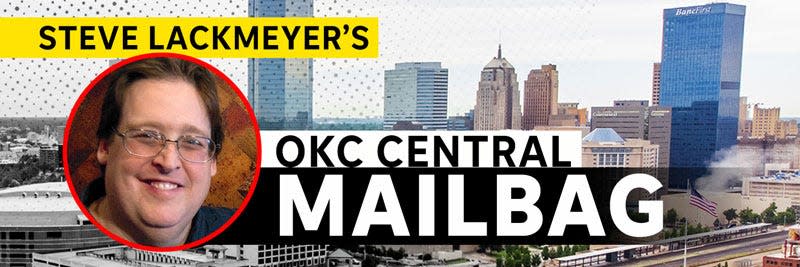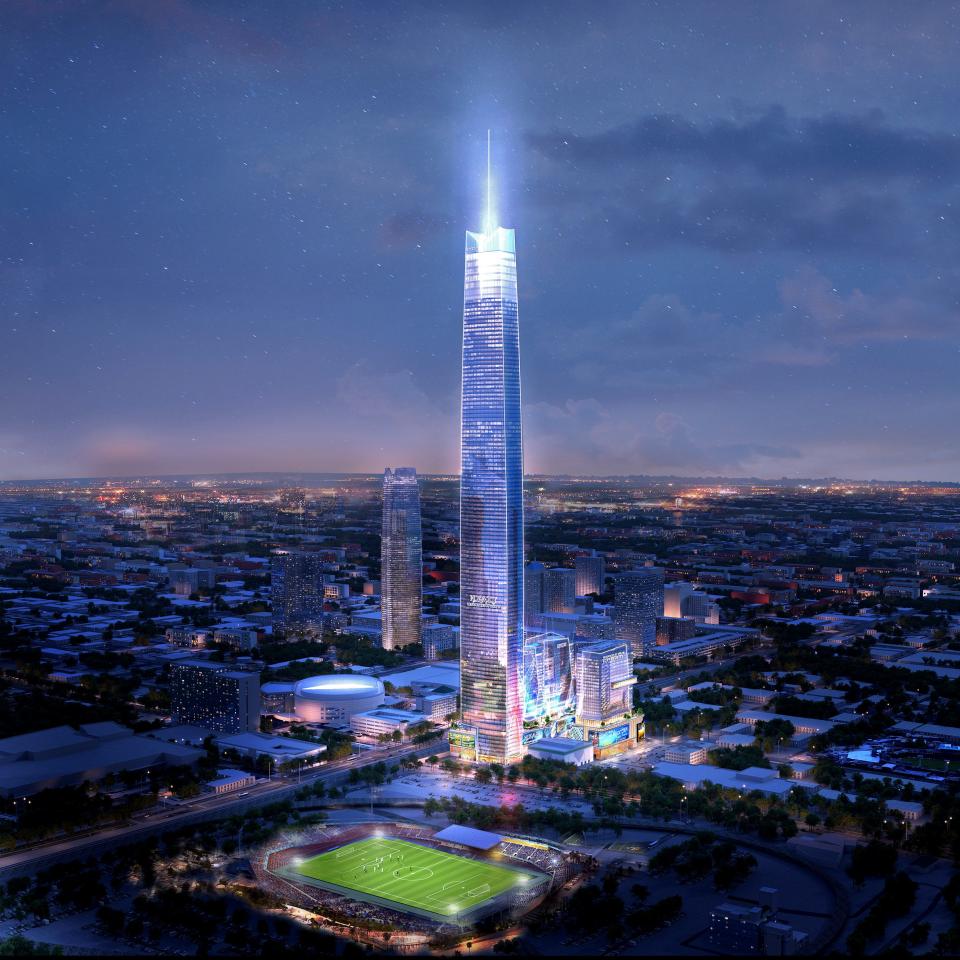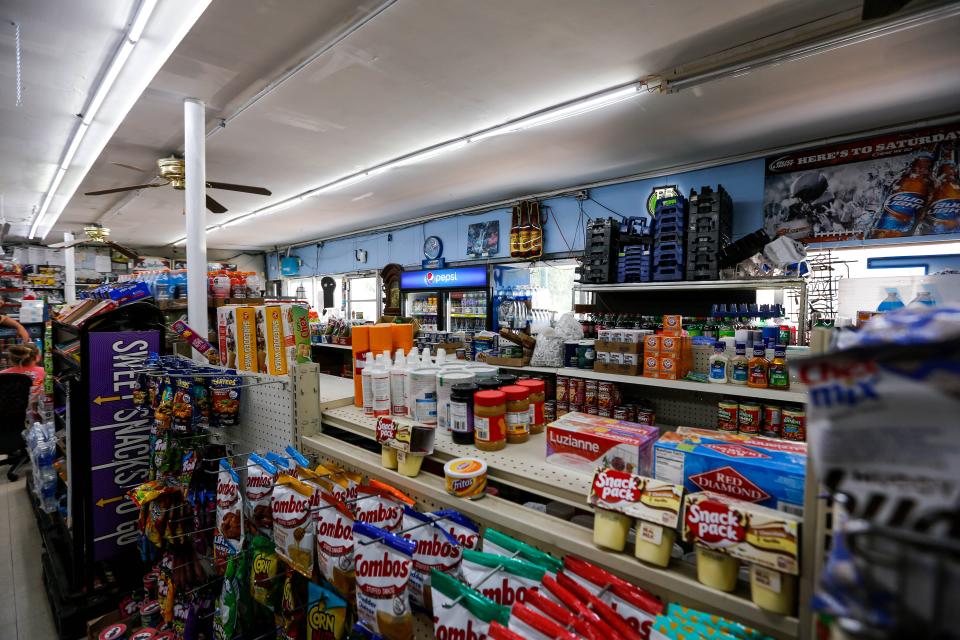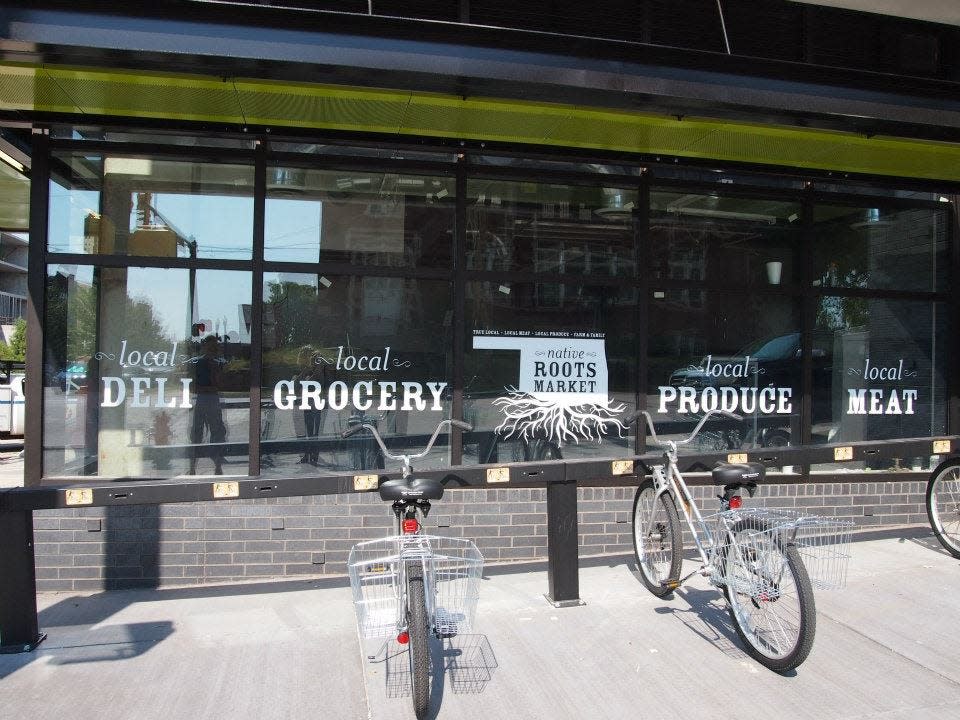When will downtown OKC get a grocery store? Is Legends Tower for real? Your questions answered

The Oklahoman's Steve Lackmeyer has relaunched his chats with readers with the new OKC Central Mailbag, in which he will answer questions submitted via email and on Threads, where he can be found at @stevelackmeyer. Lackmeyer started covering Oklahoma City for The Oklahoman in 1990 and has written seven books about its history and development.

Is Legends Tower in Bricktown really going to happen?
I have friends and family asking me about the "Legends Tower" and just assuming it is going to get built. When people ask you about it, what do you say to not sound cynical and not over excited at the same time?
The prospect of developer Scot Matteson building two high-rise apartment towers, one high-rise hotel and a mix of retail on a surface parking lot in Lower Bricktown is itself ambitious and a potential game changer if the project becomes a reality (Matteson reports he will start site work this fall).
The market for a 1,907-foot-tall residential and hotel tower is tough to find anywhere in the United States, even in New York City. The tallest residential skyscraper in the United States is currently Central Park Tower in New York City, which is 1,550 feet tall, 98 stories high, and home to 179 apartments. The units are only for the wealthiest of millionaires. The 93-story Brooklyn Tower, meanwhile, defaulted on loans in April. Most residential towers in the country, even in Oklahoma City, must compete with an increasing number office buildings being converted into housing.
Matteson reports he has the investors and believes the market exists. The Legends Tower is in the second phase of the development. I am honest; I’ve spoken to enough people to conclude there may be a market for the first two towers and I believe we can support another large full-service hotel. That’s a big deal, so let’s see what happens later this year.
More: 14 major projects planned for downtown OKC that we're following, and where they stand

Are there development programs Oklahoma City could be using?
What are some creative tools that you’ve seen other cities deploy that you wish we had here? For me, I’ve seen “barbell” TIFs in Dallas in which the transit corridor’s success helps funnel TIF investment into sub-districts that need catalytic development. Another is Fayetteville’s Tactical Urbanism Guide; residents submit applications, and the city greenlights their neighbor-led, short-term, low-cost pilot projects. What should we steal?
The efforts you list would be a great start here in Oklahoma City. One thought I have, and I can’t say I recall seeing this elsewhere, is to look at neighborhood specific zoning. Downtown already allows retail and commercial use side by side with residential use. Why not attempt this with neighborhoods that wish to have a convenience store, coffee shop or other community gathering spots on their corner?
Atlanta has a program that provides for neighborhood planning units, in which residents can express concerns and provide input in developing plans to address the needs of each neighborhood, as well as to receive updates from city government. Other cities seek to match public dollars with private investment in struggling neighborhoods.
Rental housing is a big problem in Oklahoma City, especially with influx of investor groups buying up lower income housing and raising rents without making any significant improvements to the properties. Oklahoma City needs affordable rental housing and yet neighborhoods often encounter bad landlords who do not do even the most basic maintenance and upkeep.
We try to use code enforcement to address high weeds, trash and peeling paint jobs. But this is too late in the game when it comes to stopping the damage to property values. Why not look at tax incentives for both landlords and tenants to better maintain their homes? We also have people who are outright slumlords, and yet they are free to buy properties at sheriff’s auctions regardless of their histories and existing properties. Could there be a better way to police those who show no interest in the health of our neighborhoods?

What will it take for downtown Oklahoma City to get a grocery store?
I read and enjoy all your columns in the Oklahoman. Today’s paper is full of info about all the new developments in OKC. What I don’t understand is what it will take to get a grocery store in or near downtown! How many more residents do they want? It seems logical that at this point it would be successful and popular!
Twenty years have passed since economists and retail specialists reported to The Oklahoman that downtown’s residential population would have to hit at least 9,000 people before it could support a full grocery. At the time, downtown’s population stood at 4,000. It topped 9,000 in 2016.
The challenge for opening a grocery store downtown is that to date smaller markets that were attempted failed to attract enough business to survive.
The best attempt we saw was at the Level apartments at 131 NE 2 in Deep Deuce, where Native Roots operated for eight years before closing in early 2020. The store was a transplant from Norman and initially focused on offering organic products, and in a way was a small-scale Whole Foods at a time when such products were not commonly found at regular supermarkets.
More: 14 major projects planned for downtown OKC that we're following, and where they stand
That approach was eventually dropped as the store adapted to the needs of the neighborhood. If a grocery was going to work downtown at that time, it should have worked with Native Roots. It had a popular deli with great sandwiches, soups and other offerings, a spice bar, fresh produce and meats, and the basic staples we all expect at a full-size supermarket.
The store was challenged in that it was an independent operation and it did not have the advantage of doing bulk orders. In the final couple of years, the store, which had very generous lease terms, was taken over by the then-owners of Uptown Grocery who saw it as an opportunity to create a downtown hub for pick-up orders. They never got that far and ultimately the store closed.
We had another store attempted in Midtown at The Edge apartments and it too came and went, though in far less time. We have hit the number of rooftops that were cited in studies years ago as being needed to support a downtown grocery. But with the changes we've seen with pick-up and delivery options, including Kroger, I'm not sure that downtown grocery stores can generate the traffic needed to make sense in a dense, urban setting. My latest update on the development at NW 6 and Broadway, formerly known as Nova and now called Medley Marketplace, was to include an Urban Agrarian grocery but that concept has since been scrapped.
We do have the Homeland at NW 18 and Classen, which I've been told is one of the best performing locations for the chain. The new bus rapid transit service makes it pretty quick and easy to get from most parts of downtown to the Homeland without needing a car. If you believe that we will see the Boardwalk at Bricktown towers become a reality, that project has plans for a grocery store. We shall see.
This article originally appeared on Oklahoman: Is the OKC skyscraper real? Grocery store downtown? Questions answered

